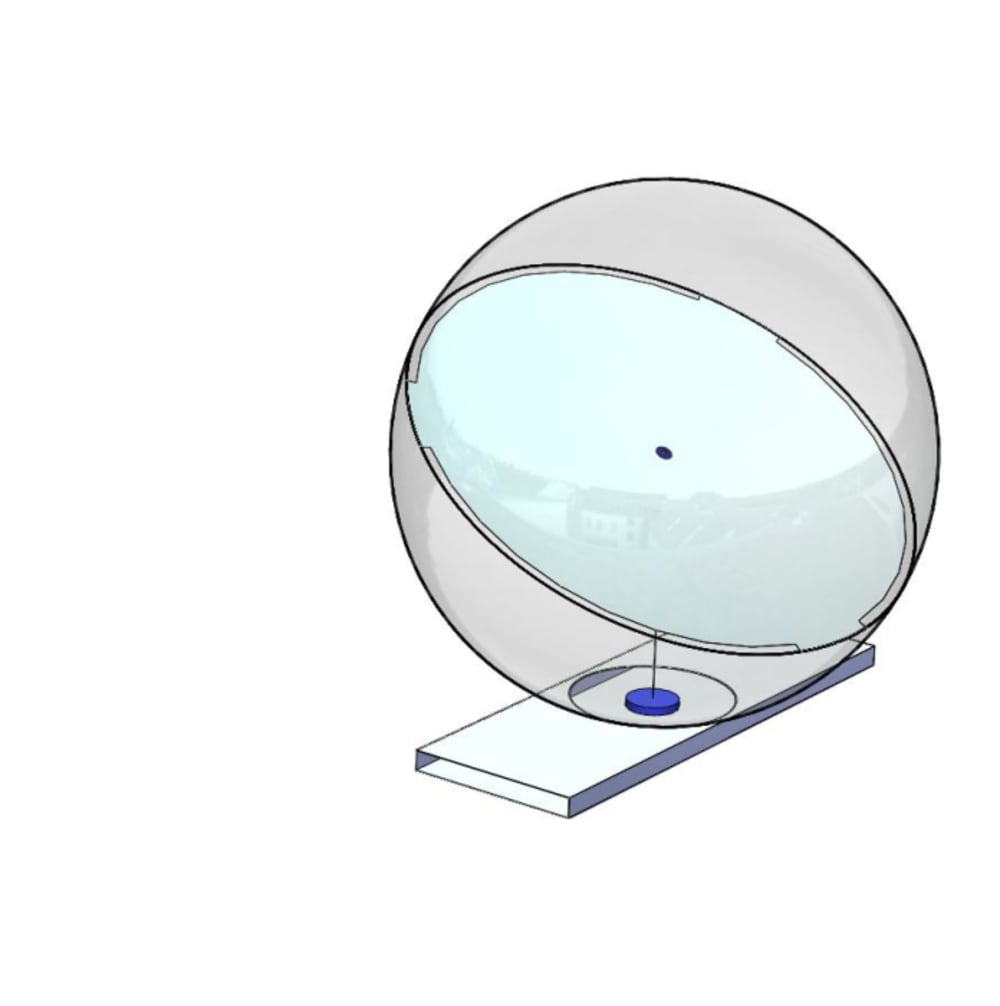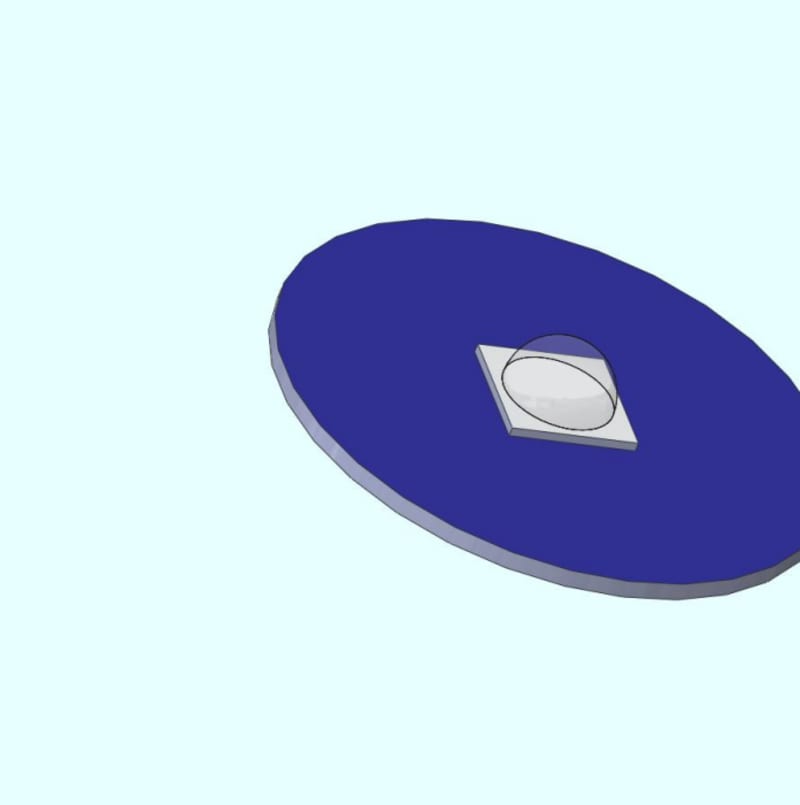Solarsphere is a glass sphere bisected with a polished reflector, a photovoltaic sun/target tracking sensor wired to a rechargeable battery ballast that contains omni directional propulsion. The Solarsphere rests on a plenum duct with a circular cutout.
The Solarsphere is intended to be mass produced to keep component costs minimal. The Solarsphere is a sealed sphere with an inert internal atmosphere to keep the internal components in pristine condition for decades.
The Solarsphere is autonomous heliostat and only requires sunlight and a occasional flash of light from a target receiver to continuously reflect sunlight at the target. An installation of thousands or hundreds of thousands requires no centralized control or maintenance. The materials used are mostly low cost and minimal.
Operation:
A small photovoltaic sensor, which consists of a hemispherical lens on a cmos or ccd camera chip, is located in the center of the mirror. Sunlight is focused on the camera chip at a pixel location. The target (where the sun is to be reflected) occasionally flashes the Solarsphere and this also creates a pixel location. A small processor alonside the camera chips calculates a temporary target location directly between the two pixel locations and then, by driving the ballast on the bottom of the sphere, the Solarsphere can position the temporary target location to the center pixel location that represents the perpendicular axis of the mirror. Every few minutes slightly compressed air can be pumped through the plenum duct and this will slightly lift the Solarsphere and the ballast, if it has moved, rotates the entire Solarsphere as it is pulled by gravity. A wire can connect the photovoltaic from the sensor to the ballast batteries.
The installation for the Solarsphere heliostats is flat ground. Since the Solarsphere is only a meter or so in diameter they can be easily protected from wind when in large arrays. They are easily washed and are not affected by Sun, rain, wind dust, or biological growth.
Design variations:
The ballast can use small motors and wheels for moving around on the bottom of the sphere or it could use an omni directional piezo traction motors. The ballast could communicate to the tracking sensor without the wires. Solar cells could be mounted on the ballast. This would allow the ballast to travel to both sides of the sphere. This could be useful if slightly soapy water were to be present in the plenum duct it could wash the sphere occasionally. It is also possible to float the Solarsphere
Like this entry?
-
About the Entrant
- Name:Richard Rosenthal
- Type of entry:individual
- Hardware used for this entry:Dell ComputerSoftware used for this entry:Solidworks
- Patent status:none





